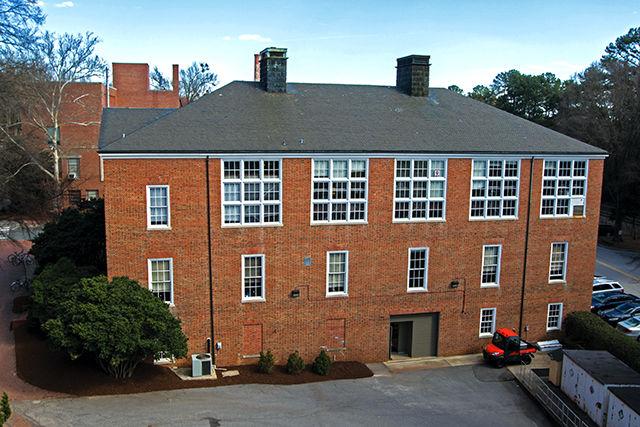Students walk past an old nuclear reactor every day without even knowing it.
This building is located near the Free Expression Tunnel behind Cox Hall and has minimal students entering and exiting. It’s called the Bureau of Mines, so what is it used for now?
Its history dates back to 1945 when the Bureau of Mines was built and used as a research station for the mining, quarrying, metallurgical and other mineral industries. It was the only building constructed during that year according to the NC State library’s campus building and grounds historical timeline.
The small building was vacant for some time after its use for the mineral industries, before it was used for storing radioactive materials. In the late 1950s, the Bureau of Mines was taken over by the physics department and housed one of NC State’s first nuclear reactors, the R-2.
In December 1958, the reactor had its core removed from the original bio shield and was relocated to the Bureau of Mines Building. It was then re-designated as reactor ‘R-4’ and became operational on April 1959 with a maximum power of 100 watts and critical mass, or the point at which the reactions become self-sustaining, of 766.5 grams of Uranium-235.
The R-4 was shut down in 1961 because the Bureau of Mines’ technology was superseded by new equipment in the Burlington Engineering Laboratories.
The Bureau of Mines was used by the physics department from 1957 to 2007.
“To provide research space for nuclear and atomic physics programs, the Bureau of Mines Building was transferred to physics in the late 1950s,” according to Jasper D. Memory and Raymond E. Fornes’ “History of the NC State University Department of Physics: A Success Story.”
“In 1975 on the ground floor (basement) there was a single-ended Van de Graaff accelerator that was used by Dr. Arthur Waltner for nuclear physics experiments. This lab was cleaned out in the late ‘80s and I used it for low temperature physics research until the move to Riddick Hall around 2007. Another faculty member, David Martin, also had a vacuum laboratory on the first floor,” said David Haase, professor in the department of physics, in an email.
The Bureau of Mines, like most of main campus’ buildings, still retains its aged brick. On the inside, the facilities like computer labs and offices are modern, and contrast against the old qualities of the building. Its design contains architectural touches from the Federal period, which coincided with the federal style that dominated the American architectural landscape from roughly 1780 to 1830.
“The first floor was occupied in 1976 by Dr. John Risley’s lab (atomic physics) and (I believe) Dr. Mowat’s lab (atomic physics) and some faculty offices. Dr. Later Risley and Dr. Karen Johnston used parts of the first floor as a teaching and tutorial center. This area was where the homework software predecessor to WebAssign was first developed,” Haase said.
Many of the Department of Physics’ faculty have used the building.
“At some point (1990s?) a second floor was added which housed the offices of faculty in theoretical physics and astrophysics. For a while Dr. Wesley Doggett operated in the basement a relativistic electron beam device for studies of charged plasmas,” Haase said.
Currently the building is used by the Department of Statistics and graduate students.
“To us, it’s really just a place our grad students have offices since there is not space enough in SAS Hall for all of the math or statistics students. We don’t have any historical attachment or connection to the building,” Alison McCoy said, the receptionist for the department of statistics.
The Bureau of Mines stands today as a quiet, renovated building with several offices.








